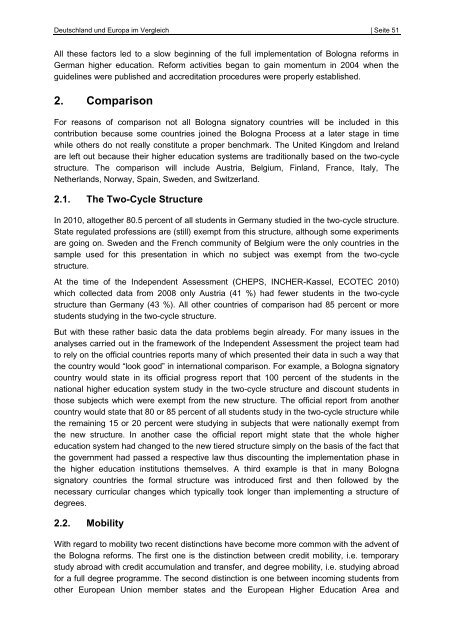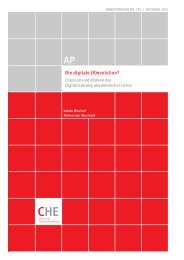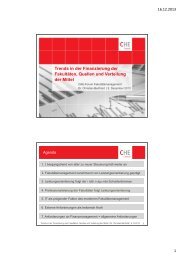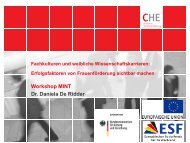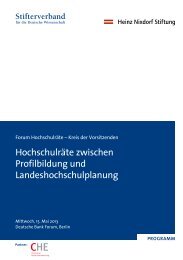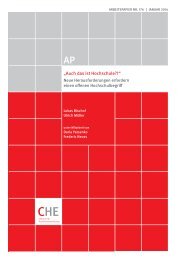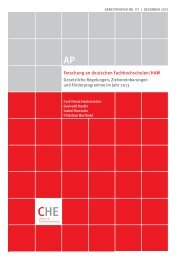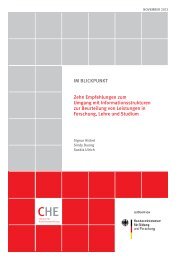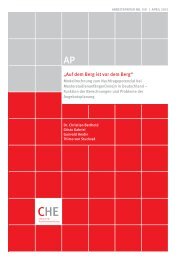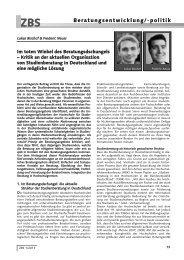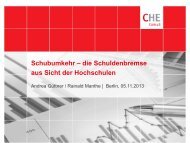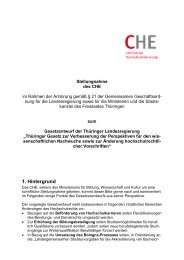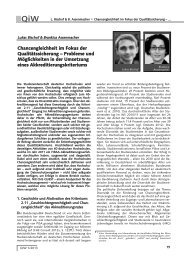Der Bologna-Prozess aus Sicht der Hochschulforschung
Der Bologna-Prozess aus Sicht der Hochschulforschung
Der Bologna-Prozess aus Sicht der Hochschulforschung
Erfolgreiche ePaper selbst erstellen
Machen Sie aus Ihren PDF Publikationen ein blätterbares Flipbook mit unserer einzigartigen Google optimierten e-Paper Software.
Deutschland und Europa im Vergleich | Seite 51<br />
All these factors led to a slow beginning of the full implementation of <strong>Bologna</strong> reforms in<br />
German higher education. Reform activities began to gain momentum in 2004 when the<br />
guidelines were published and accreditation procedures were properly established.<br />
2. Comparison<br />
For reasons of comparison not all <strong>Bologna</strong> signatory countries will be included in this<br />
contribution bec<strong>aus</strong>e some countries joined the <strong>Bologna</strong> Process at a later stage in time<br />
while others do not really constitute a proper benchmark. The United Kingdom and Ireland<br />
are left out bec<strong>aus</strong>e their higher education systems are traditionally based on the two-cycle<br />
structure. The comparison will include Austria, Belgium, Finland, France, Italy, The<br />
Netherlands, Norway, Spain, Sweden, and Switzerland.<br />
2.1. The Two-Cycle Structure<br />
In 2010, altogether 80.5 percent of all students in Germany studied in the two-cycle structure.<br />
State regulated professions are (still) exempt from this structure, although some experiments<br />
are going on. Sweden and the French community of Belgium were the only countries in the<br />
sample used for this presentation in which no subject was exempt from the two-cycle<br />
structure.<br />
At the time of the Independent Assessment (CHEPS, INCHER-Kassel, ECOTEC 2010)<br />
which collected data from 2008 only Austria (41 %) had fewer students in the two-cycle<br />
structure than Germany (43 %). All other countries of comparison had 85 percent or more<br />
students studying in the two-cycle structure.<br />
But with these rather basic data the data problems begin already. For many issues in the<br />
analyses carried out in the framework of the Independent Assessment the project team had<br />
to rely on the official countries reports many of which presented their data in such a way that<br />
the country would “look good” in international comparison. For example, a <strong>Bologna</strong> signatory<br />
country would state in its official progress report that 100 percent of the students in the<br />
national higher education system study in the two-cycle structure and discount students in<br />
those subjects which were exempt from the new structure. The official report from another<br />
country would state that 80 or 85 percent of all students study in the two-cycle structure while<br />
the remaining 15 or 20 percent were studying in subjects that were nationally exempt from<br />
the new structure. In another case the official report might state that the whole higher<br />
education system had changed to the new tiered structure simply on the basis of the fact that<br />
the government had passed a respective law thus discounting the implementation phase in<br />
the higher education institutions themselves. A third example is that in many <strong>Bologna</strong><br />
signatory countries the formal structure was introduced first and then followed by the<br />
necessary curricular changes which typically took longer than implementing a structure of<br />
degrees.<br />
2.2. Mobility<br />
With regard to mobility two recent distinctions have become more common with the advent of<br />
the <strong>Bologna</strong> reforms. The first one is the distinction between credit mobility, i.e. temporary<br />
study abroad with credit accumulation and transfer, and degree mobility, i.e. studying abroad<br />
for a full degree programme. The second distinction is one between incoming students from<br />
other European Union member states and the European Higher Education Area and


